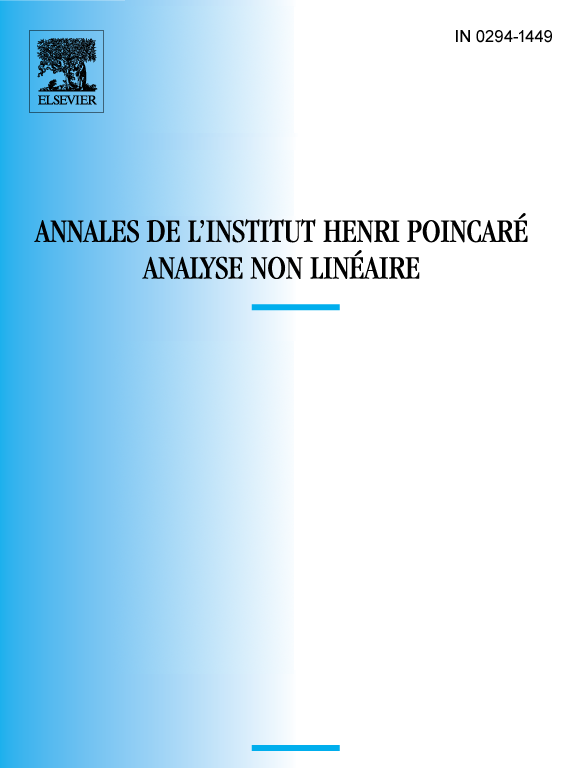Eventual monotonicity and convergence to travelling fronts for the solutions of parabolic equations in cylinders
Jean-Michel Roquejoffre
U.F.R. MIG, U.M.R. CNRS 5640, Université Paul Sabatier, 118, route de Narbonne, 31062 Toulouse Cedex, France

Abstract
The paper is concerned with the long-time behaviour of the solutions of a certain class of semilinear parabolic equations in cylinders, which contains as a particular case the multidimensional thermo-diffusive model in combustion theory. We prove, under minimal conditions on the initial values, that the solutions eventually become monotone in the direction of the axis of the cylinder on every compact subset; this implies convergence to travelling fronts. This result is applied to propagation versus extinction problems: given a compactly supported initial datum, sufficient conditions ensuring that the solution will either converge to 0 or to a pair of travelling fronts are given. Additional information on the corresponding equations in finite cylinders is also obtained.
Résumé
Cet article traite du comportement en grand temps des solutions d’une classe d’équations paraboliques dans des cylindres; ce type d’équation contient le modèle thermo-diffusif multidimensionnel de la théorie de la combustion. Nous montrons que, sous des hypothèses minimales sur la donnée initiale, les solutions deviennent, en temps fini, monotones sur tout compact dans la direction de l’axe du cylindre; ceci implique la convergence vers des ondes progressives. Ce résultat est ensuite appliquéà des problèmes de propagation et d’extinction: une donnée initiale étant fixée, on donne des conditions suffisantes pour que la solution qui en est issue tende vers 0, ou converge vers deux fronts se déplaçant dans des directions opposées. On obtient enfin des informations supplémentaires pour des équations dans des cylindres bornés.
Cite this article
Jean-Michel Roquejoffre, Eventual monotonicity and convergence to travelling fronts for the solutions of parabolic equations in cylinders. Ann. Inst. H. Poincaré Anal. Non Linéaire 14 (1997), no. 4, pp. 499–552
DOI 10.1016/S0294-1449(97)80137-0